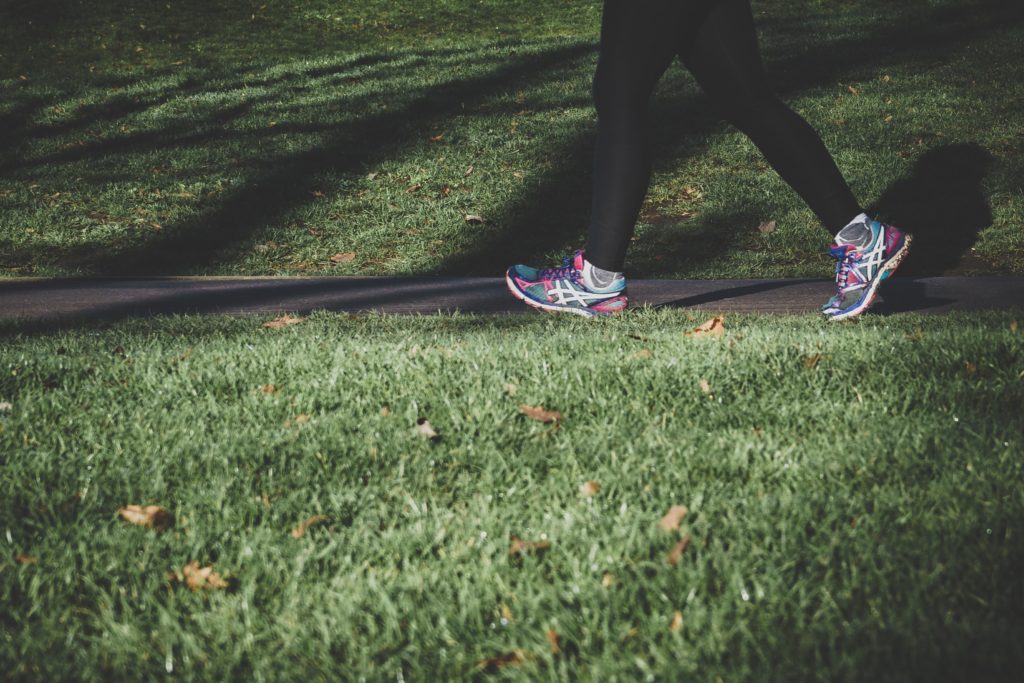A Walk in The Park: Walking Safety

A Walk in The Park: Walking Safety
The team at Island Sports Physical Therapy encourages a healthy lifestyle. As spring blooms, the outdoors beckon us. The longer days, ample sunshine, and warmer temperatures provide us with an excellent opportunity to follow that calling. Add a good friend or spouse to your session and you’re primed for success. Walking is an excellent starting point to get re-adjusted to an exercise routine. Studies have shown that simply walking creates both physical and psychological benefits, such as improving cardiovascular health and increasing mood. Walking does not require equipment or special skill and can be performed at any time.
What are some factors I should consider before taking a walk?
As with any exercise routine, be sure to have your physician clear you to begin. Next, having goals, both short-term and long-term, are key. It’s even more important to progressively plan each of your sessions so that it leads to the achievement of the ultimate goal. Here are some factors to consider:
Distance and Pace
How far and how fast your walk should be is a matter of personal choice and your goals. While many studies advocate for 30-minutes of brisk walking (3-4 mph), five days per week, others look to heart rate as the primary factor. Typically an individual’s heart rate, or pulse, can be detected with two fingers just below the jawline. Activity that raíses heart rate within 55%-70% of an individual’s maximum heart rate or beats per minute is effective in developing physical benefits. The maximum heart rate can be determined using the equation: 220 minus age = maximum heart rate/minute. For example, a 55-year old’s maximum heart rate is 165. So, ideally, their walk should elicit a heart rate range of 90 – 115 beats per minute. Wearable technology, such as watches, monitors, and bands, has been a tremendous help in accurately detecting proper heart rate ranges. Physiologically, an increase in heart rate also leads to an increase in perspiration, increased blood flow and increased breathing rate. That means, if you’re engaged in a conversation, you may have some level of breathlessness. An inability to talk most likely means your pace is too vigorous. Lastly, the number of steps can help determine the level of intensity. Studies indicate that a walking pace of 100 steps/minute is moderately intense.
Outdoor Surface
Depending on the location of your walk, the option to choose the type of surface or terrain will play a role in your exercise intensity. Often, running up hills will increase the exercise intensity. Further, the ground surface plays a role in the stresses that are placed on the body.
Here are some options for your consideration:
- Road/Sidewalk: Perhaps the easiest and most convenient location to start walking is right outside your door. Roads and/or sidewalks, while convenient, do pose a traffic safety concern. As an alternative, many Long Island golf courses allow residents to walk the circuitous cart paths during certain hours. Be aware that continual walks on hard pavement may exacerbate lower-body injuries, like shin splints, or lower back pain. The Island Sports Physical Therapy team is available to provide an evaluation of those injuries before implementing a walking exercise routine.
- Track: Another safe option for many is an outdoor track. Local Long Island communities have athletic facilities that often include a 400-meter track open for public use. Four laps total one mile. This flat, forgiving surface is ideal for beginners.
- Grass/Trails: Long Island has diverse landscapes and a multitude of parks that allow you to enjoy scenery and nature. As a benefit, the softer terrain creates less impact on joints.
- Beach: Whether it’s the North Shore or South Shore of Long Island, the beaches can enhance the benefit of your walks. Sand will challenge your balance and increase the amount of work your muscles and joints, especially your calves and ankles, require to propel your body over the ground.
Apparel
Spring weather can be fickle with temperatures changing quickly. Be sure to layer both your upper and lower body. Choose lightweight, moisture-wicking materials that are closer to your skin with a breathable, water-repellent or water-resistant layer atop that. Hats and gloves are still advisable for brisk mornings. Opt for reflective clothing when walking during the dawn or dusk hours.
Consider your shoewear. The foot and lower leg distribute the forces that the ground places upon them during activity, especially when on the pavement. Properly fitted and appropriate shoewear is a vital extension of your foot. It helps correct any biomechanical abnormalities that your foot and lower body may have. Your shoe selection may be dependent on the terrain, but should probably include:
- The proper outsole, the undersurface of the shoe that makes contact with the ground, should only bend at the ball of the foot, also known as the transverse metatarsal arch. Rubber is usually the best. Trail walking shoes may incorporate a more rigid outsole.
- Mid-sole: This gel, air or foam portion is responsible for the distribution of forces from the ground. Some shoes incorporate a reinforced medial layer for those individuals who tend to overpronate and/or have flat feet, also known as pes planus.
- Lacing system: How you tie your shoe may help the shoe fit better, ultimately preventing overuse injuries. Be sure that the toe box (the front portion of the shoe) fits snuggly but isn’t too tight, which may cause blisters and neuromas.
New Activity Considerations
Proper walking cadence and patterns are key to incorporate efficient muscle sequencing. The muscles located in the rear of your lower body – calves, hamstrings, and glutes – should work as a unit to control effort, balance, and stability. Thus, as the walking pattern progresses, consider these tips:
- Foot and Ankle: Land on the heel, rolling through the foot and push off the inside two toes.
- Knee and Hip: When landing, maintain a “soft” knee and hip to aid in your body accepting the ground forces. When pushing off, focus on contracting the gluteus muscle (buttock). It’s the primary muscle group responsible for forwarding movement.
- Shoulders, Head and Neck: Maintaining a head straight, eyes forward posture will keep your spine aligned. Focus on keeping the shoulder blades (scapulae) pitched backward, yet allow for a natural swing. To increase the walking pace, bend the elbows to a 90-degree angle and swing the shoulders comfortably. This technique is especially useful on hilly terrain.
Self Care after Activity
As with any new activity or increase in exercise intensity, there may be some initial soreness or discomfort in the stressed areas of the body. While this is usually temporary, gentle stretching and the use of a cold application for 20-30 minutes (no longer) every 60-90 minutes can help alleviate this discomfort. Should the pain or discomfort last longer than 24-48 hours, the Island Sports Physical Therapy team can help identify the cause and create a physical therapy plan to get you back on track.
